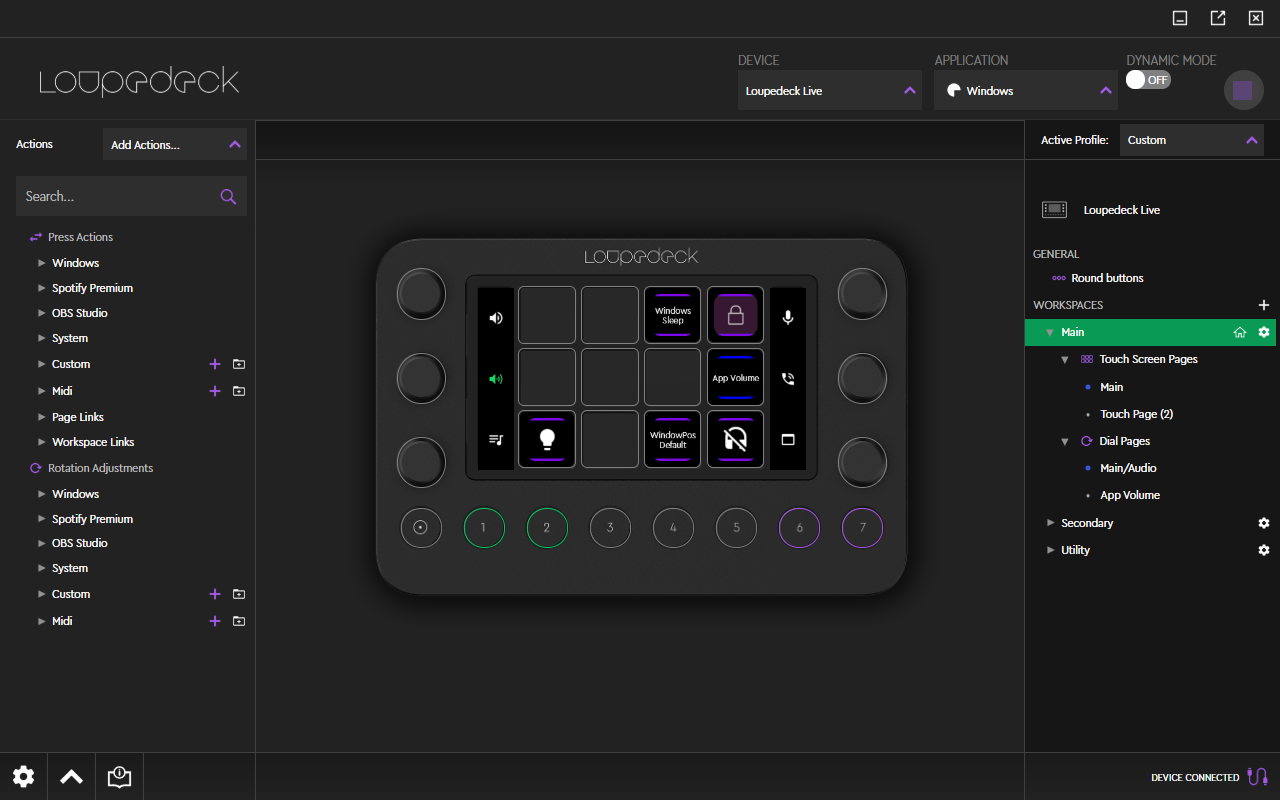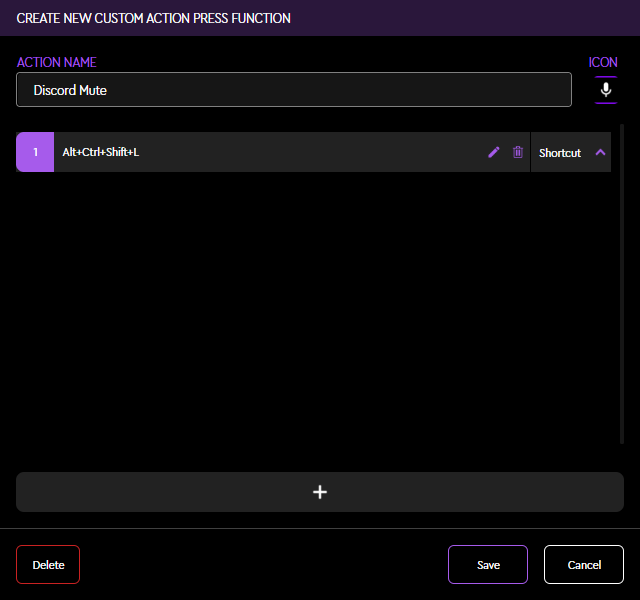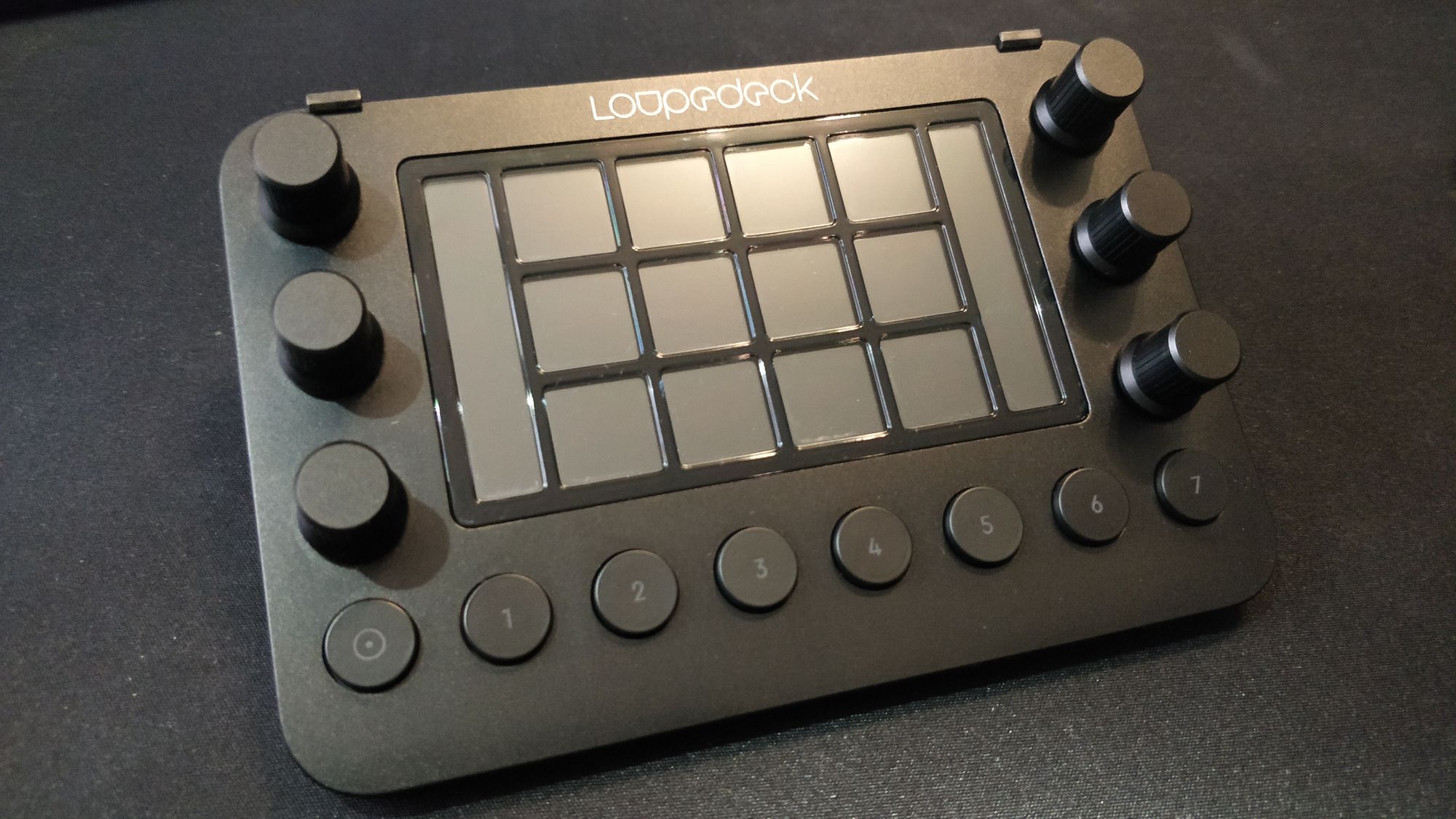I’ve been using the Loupedeck Live for around two weeks now and thought I might write a review about it. Spoiler: I’ll probably send it back since it has a severe issue, which I’ll explain further down.
The Hardware
Let’s talk about the device itself first. It has great build quality and looks really nice. The device is mostly made out of plastic and the dials and the top seem to be made out of some kind of metal. Everything except the touchscreen framing has a matte finish and the surface feels smooth. The physical buttons have a nice, clicky feeling and the rotary dials have a decent ratcheting feedback, but are a little hard to press down. The touchscreen has a 480×272px resolution, which is sufficient when you are around an arms length away, but you can slightly see the pixels when you get closer than that. The screen is divided into the individual “buttons” using thin plastic strips. Inside of the device is a small vibration motor as a feedback for when a touch button is pressed, but it’s rather useless since you can only hear it as it vibrates after you let go of the button. It’s connected via USB C, with an included ~80cm long USB C to C cable (with an adapter from USB C to A). The Loupedeck can either lay flat or stand ~25° tilted up using the included bracket, which is attachable to the back. On the bottom is a rubber nob in each corner, although the bracket has no rubber nobs. On my desk mat it stands rather solid when using it normally. This probably covers most there is to say about the hardware, now let’s look at the less great part: the software.
The Software
To use the device you need the Loupedeck software, downloadable from their website.

In the software you can assign various actions to the buttons and dials. There are basically two types of action: press and rotation. The press actions can be assigned to the physical, touch and dial buttons, while the rotations actions can only be assigned to the dials. There’s a more ore less limited amount actions available, ranging from media control to specific application features. The problem is how they organized it. As you can see in the screenshot you can select application profiles, and most actions are tied to those profiles. This means that you can’t have a single profile for everything, but rather have to create many profiles. When you plan on using it like me – mainly controlling random stuff like Discord, ShareX or even Home Assistant devices, all based on hotkeys or scripts – that’s not really useful, since you either have to add all those actions to every application or select a window that has no special profile (causing the “Windows” one to be active) to use your generic actions. Only a few application specific actions are available everywhere, like the OBS or Spotify ones. The way actions are assigned is alright – just drag and drop them onto the button of the Loupedeck in the middle of the window – although it is currently a little unintuitive and overcomplicated if you want to use custom icons for default actions. For that you have to create a custom action and then assign the action you want inside the custom one. Custom actions can be sorted into groups, but for some reason you can’t move custom actions after they are created – a lot of fun when you just created a dozen actions and then consider grouping them afterwards.


The Spotify integration is currently rather useless, since it randomly stops working after a few minutes. According to their support they are working on that, but I have no clue when/if it will be fixed. Custom (API based) actions are currently not possible, but they announced a SDK to be released in June. For those curious: the backend service is written in C# and the GUI is an Electron app. When you decompile the service you might see that there is already a plugin system present, including tools to install plugins. I presume you could already build custom plugins if you spend some time looking at how the already installed plugins work. Now lets talk about the connectivity of the device. After plugging it in via USB it presents itself as a network interface.

This is where the problem I teased at the beginning comes from. The Loupedeck has a DHCP server and assigns an IP address and a DNS server to Windows.

The issue with this is that – at least on my system – this causes Windows to try to do DNS lookups via that DNS server (and the Loupedeck doesn’t even have a DNS server), which introduces a delay of 10+ seconds every time anything is resolved – have fun browsing the internet like that. The obvious solution seems to increase the metric (=decrease the priority) for that interface, but that doesn’t seem to stop Windows from being silly. I talked to the Loupedeck support about this and after I told them for the 3rd time that I already increased the metric and suggesting that they should just remove the DNS server from the DHCP reply they started to ignore me (since Feb 15 till now, Feb 26). UPDATE: They replied on Mar 11 (~3 weeks later) with another useless advice (to decrease the priority for IPv6, for which no DNS server is specified anyway) and then continued to ignore me, after I once again asked if they could remove the DNS server from the DHCP reply. I don’t know why they use a network interface for something that certainly doesn’t need to be one, but I assume they were too lazy to do it properly and implement their own driver. At first I thought they use some custom TCP protocol to talk to the device, but no, they just use an unencrypted WebSocket.
Conclusion
The device has very promising hardware yet the software is lacking severely. The way they implemented the communication with the device is just lazy and causes unnecessary problems. The support seems to just ignore you when they don’t know how to fix something so you can’t rely on that. Unless they fix the network problem within the next week I’ll sadly have to send it back to Amazon, since I can’t work or do anything really while the device is connected, making it an expensive paperweight. As soon/if the problem is fixed and the software gains the SDK support I may look into it again though.
